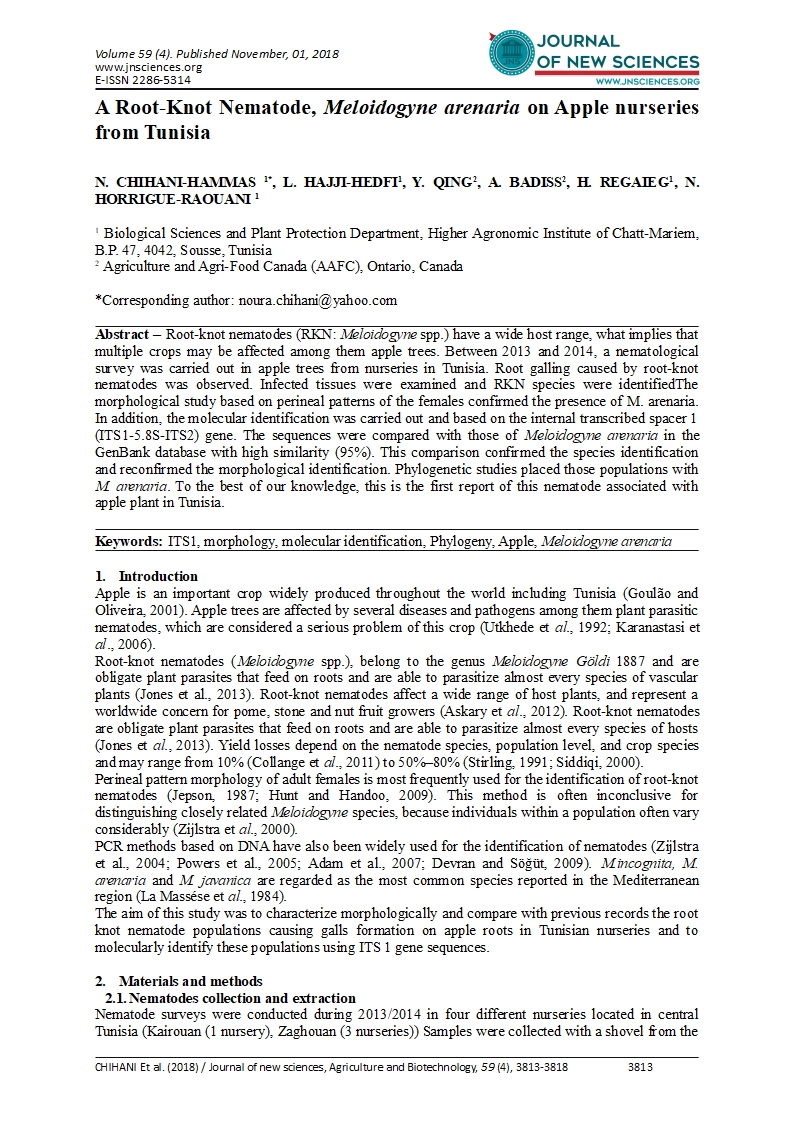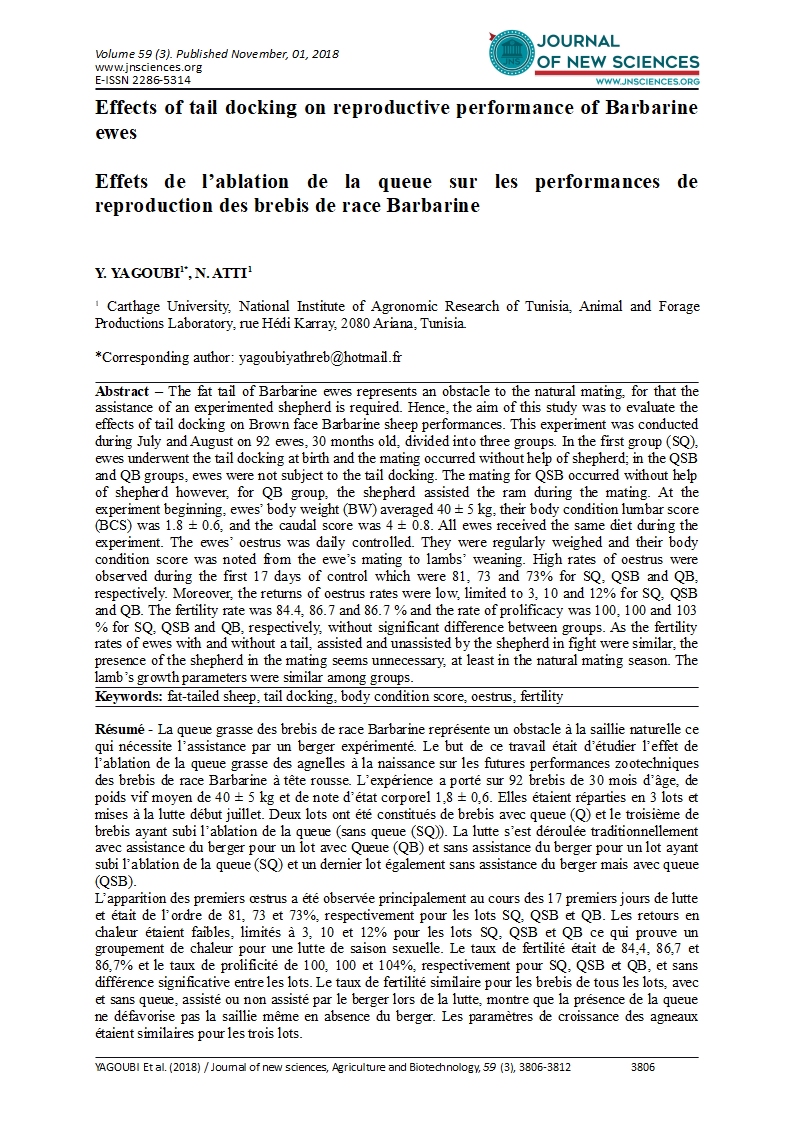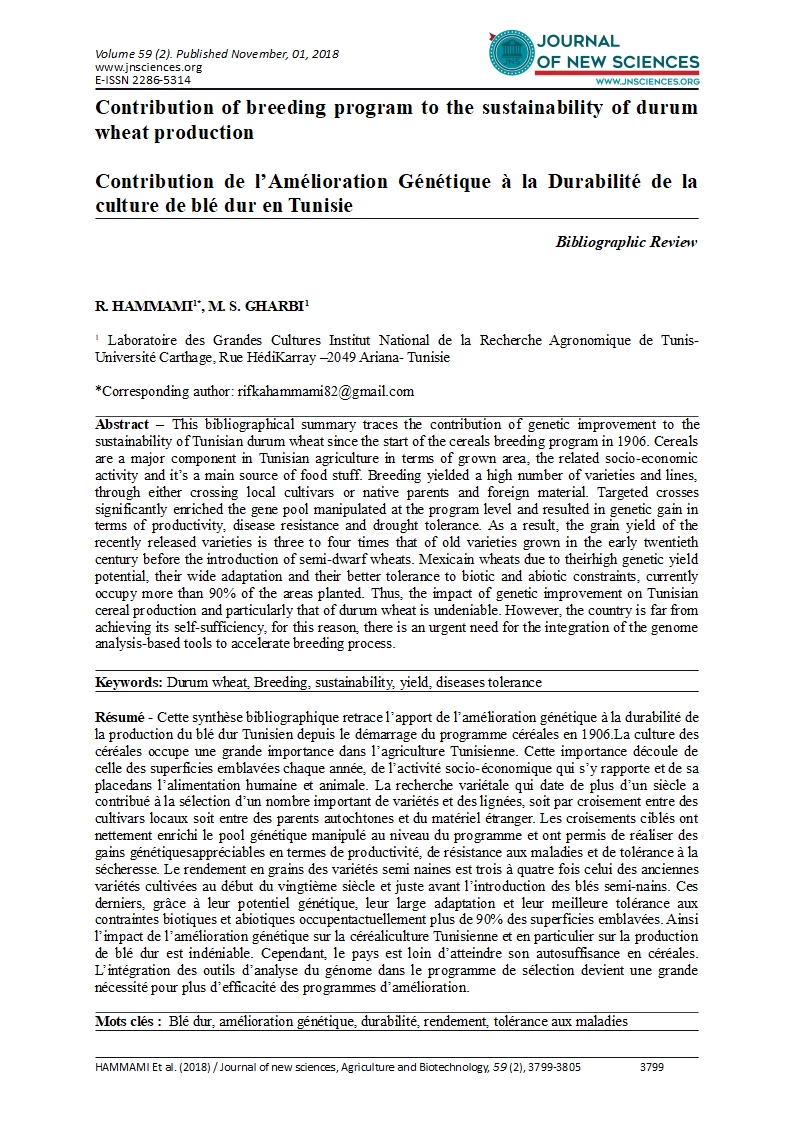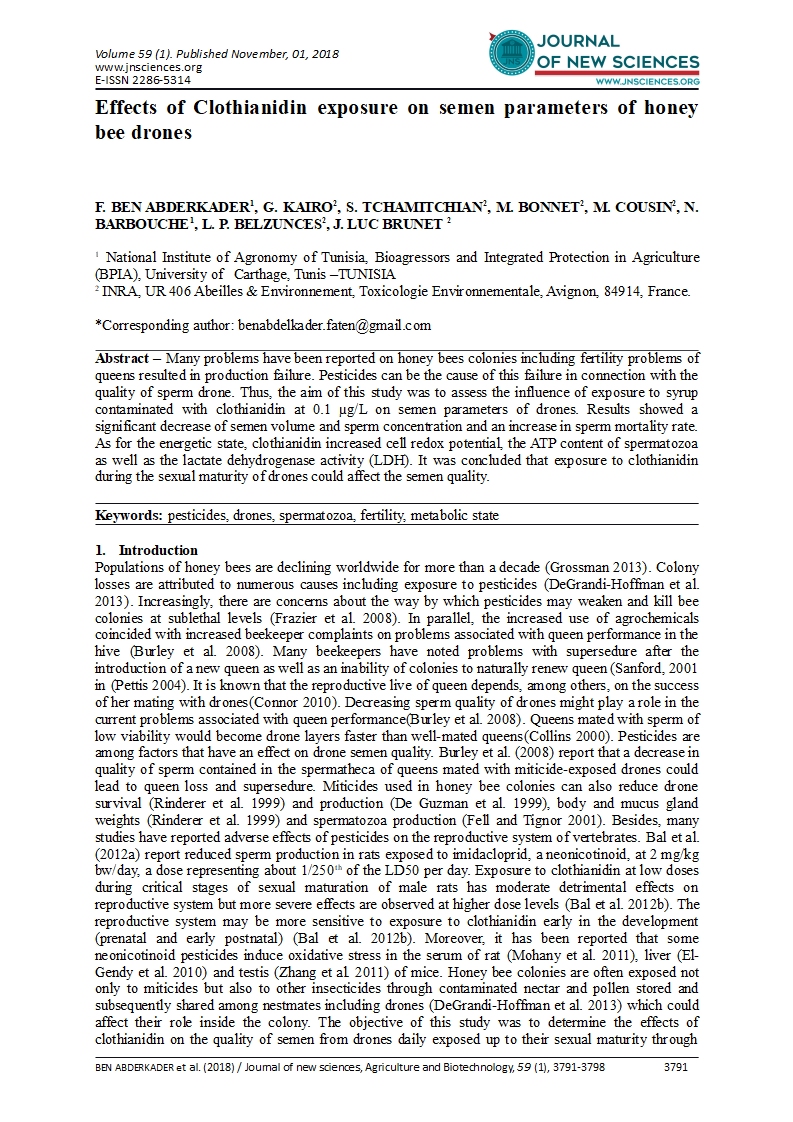- Category: Volume 59
- Hits: 4050
Impact of Environmental Factors on Average Daily Gains of Local kids Population under Pastoral Mode in Tunisian Arid Region
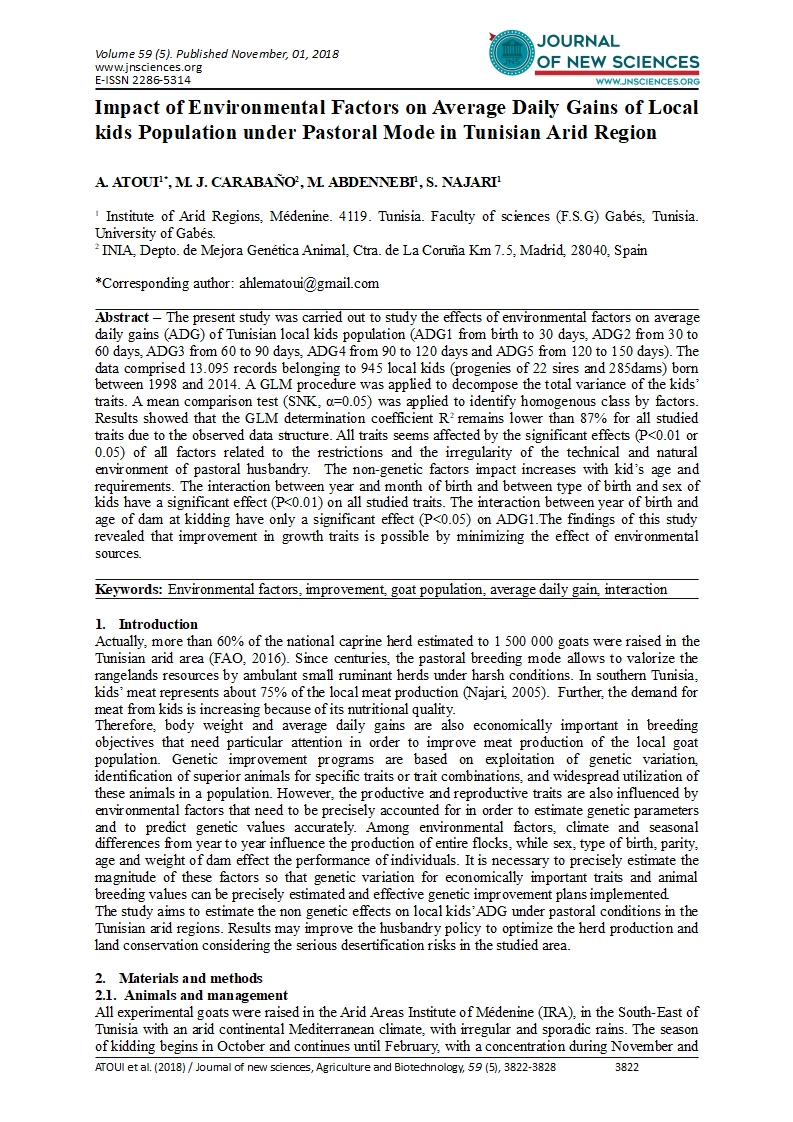
A. ATOUI1
M. J. CARABAÑO2
M. ABDENNEBI1
S. NAJARI1
1 Institute of Arid Regions, Médenine. 4119. Tunisia. Faculty of sciences (F.S.G) Gabés, Tunisia. University of Gabés.
2 INIA, Depto. de Mejora Genética Animal, Ctra. de La Coruña Km 7.5, Madrid, 28040, Spain
Abstract – The present study was carried out to study the effects of environmental factors on average daily gains (ADG) of Tunisian local kids population (ADG1 from birth to 30 days, ADG2 from 30 to 60 days, ADG3 from 60 to 90 days, ADG4 from 90 to 120 days and ADG5 from 120 to 150 days). The data comprised 13.095 records belonging to 945 local kids (progenies of 22 sires and 285dams) born between 1998 and 2014. A GLM procedure was applied to decompose the total variance of the kids’ traits. A mean comparison test (SNK, α=0.05) was applied to identify homogenous class by factors. Results showed that the GLM determination coefficient R2 remains lower than 87% for all studied traits due to the observed data structure. All traits seems affected by the significant effects (P<0.01 or 0.05) of all factors related to the restrictions and the irregularity of the technical and natural environment of pastoral husbandry. The non-genetic factors impact increases with kid’s age and requirements. The interaction between year and month of birth and between type of birth and sex of kids have a significant effect (P<0.01) on all studied traits. The interaction between year of birth and age of dam at kidding have only a significant effect (P<0.05) on ADG1.The findings of this study revealed that improvement in growth traits is possible by minimizing the effect of environmental sources.
Keywords: Environmental factors, improvement, goat population, average daily gain, interaction

